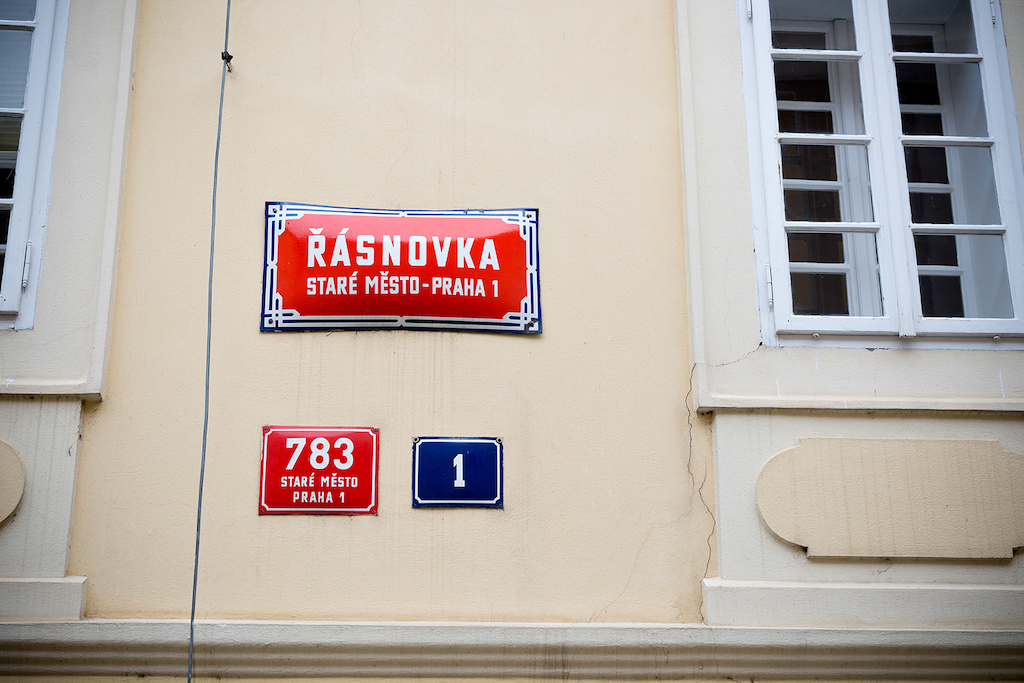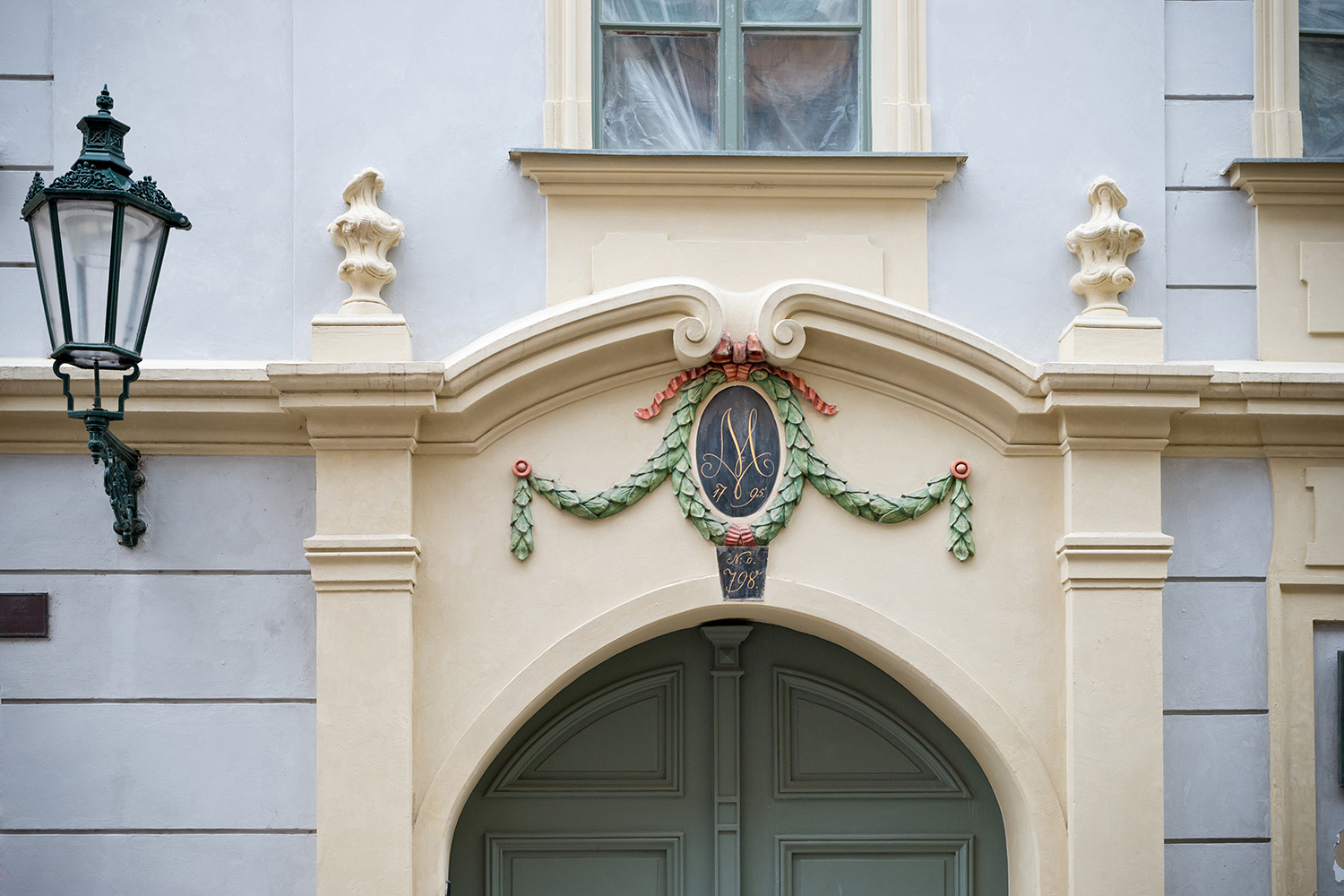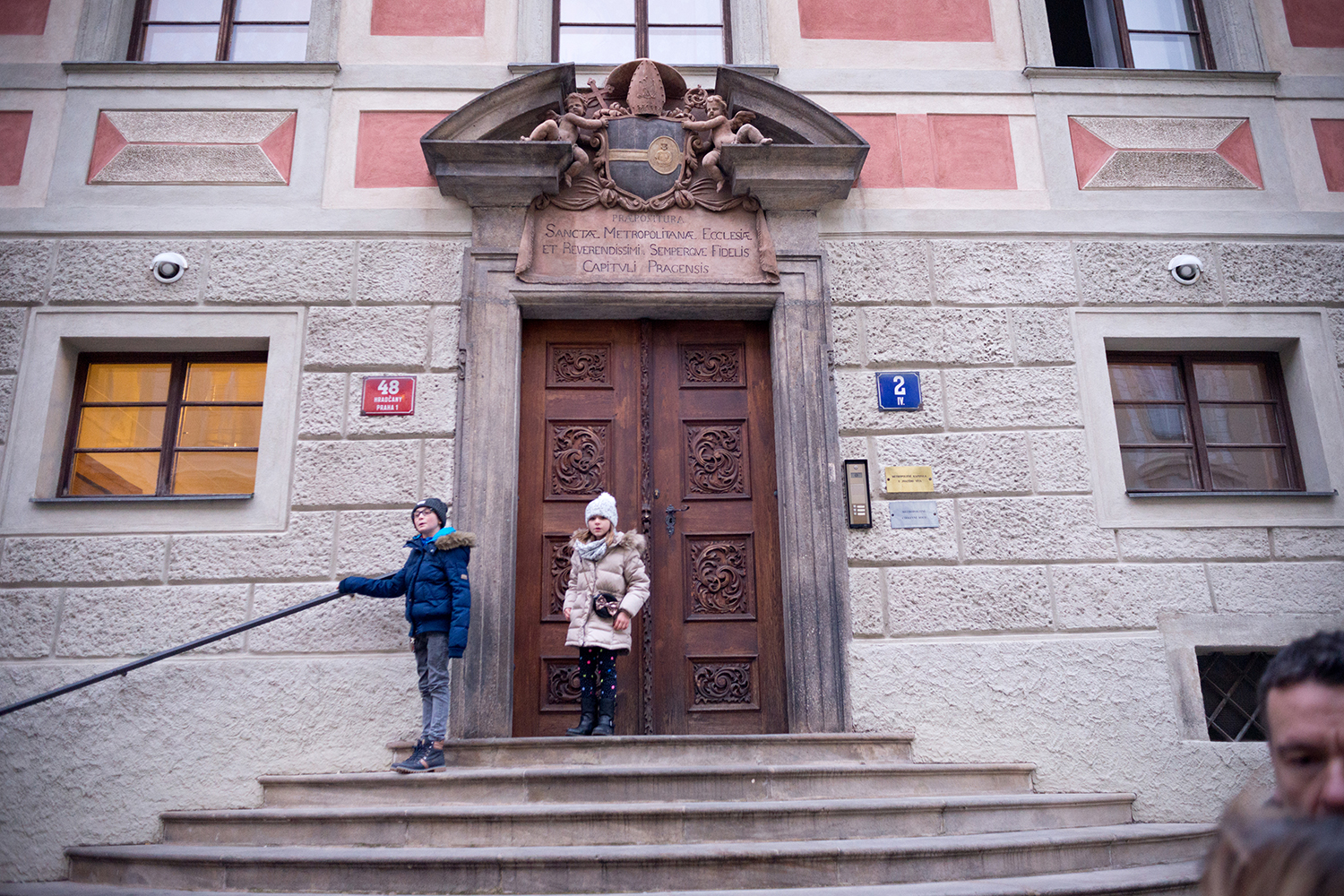Whatʼs up With House Numbering in Prague

So, here you are in Prague. You have some idea of what you want to see, where you want to eat, and a place or two that you will enjoy some fine entertainment. You have your map, the addresses, and maybe a smartphone to help you get around. This is where it gets interesting.
I don’t know about many countries, but most I have been to have street signs on poles at the corner of intersections. Not so here in Prague. The street names are on the sides of buildings, sometimes at intersections, sometimes between intersection. You will eventually find them, it is just not always easy.
Let’s talk about the numbers now. Walking up to a building you will find two sets. I know what you’re thinking “What do I need two sets of numbers for?” Well, that’s a good question with a bit of a long answer.

A lesson from the history
The two sets are coloured red (descriptive) and blue (reference or orientation). The red date back to around 1770 when they were placed there by order of big mama Maria Theresa of the Habsburgs, a Holy Roman Empress, mother of 16 children, and generally one ruling kind of a gal. Each neighbourhood had its own set starting at 1 and going up. You can often see the number engraved on the building as well as on the little red plates. Ask your tour guides, they will be happy to point a few out. The issue is each new house was given the next number no matter the location in the neighbourhood. You can see how bad the mail could get lost using that system.

And that takes us to 1805 and those zany Habsburgs are at it again. Seeing the problems with the system, they start renumbering the buildings. In 1857 the world is well into the industrial age and to help ring in the era the Habsburgs provide us with a new number system by street giving each street system a more logical feel. This mad new number craze sweeps the Habsburg Empire and reaches Prague in the 1860s.
This new wave number thing will keep rolling with appropriate music and dance until 1884 when the traditional thinking slow dancing (and not very well) government assessors used the description numbers in the land registration books.

Red is good, blue is better
So today, while the government guys use the old method, most civilized members of society will be using the new, blue numbers. “What has this to do with me?” you may be asking yourself. Well, if you are planning to find that really nice restaurant you have heard of, you’ll need to enter the blue number into the all-knowing smartphone so you can google your way to great food. If you are meeting up with friends to try some beers, you’ll need to tell the cab driver the blue number and you will have no problem.
If you use the red number, you’re drinking bad tea with government land assessors. I will leave this decision up to you.

If this was a bit confusing, wait till you hear about house signs! This is how we got around before the red numbers, and it required quite a lot of memorising. That is a story for another blog post, though… Or you can ask your guide on one of the tours!
June 17, 2021

